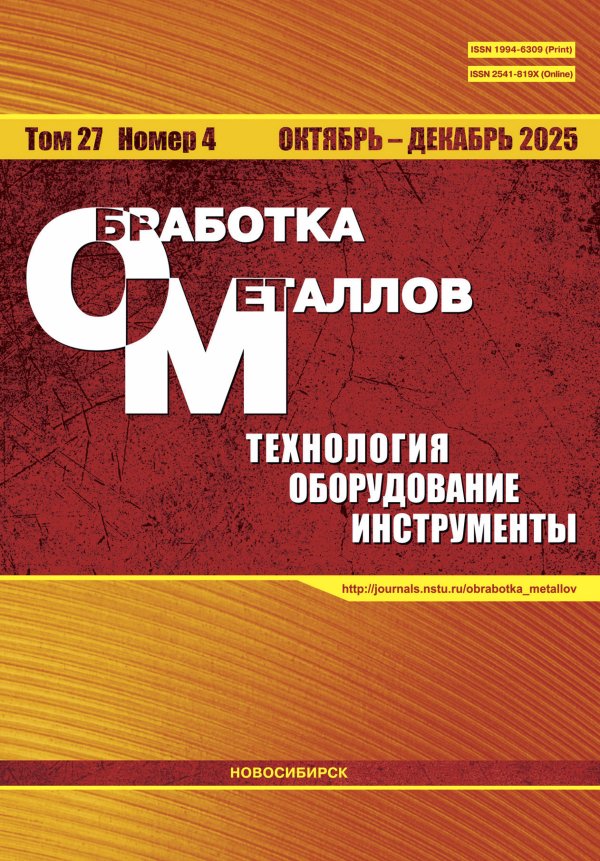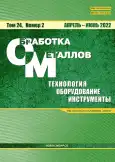Влияние борирования и алитирования на структуру и микротвердость низкоуглеродистых сталей
- Авторы: Гуляшинов П.А.1, Мишигдоржийн У.Л.1, Улаханов Н.С.1
-
Учреждения:
- Выпуск: Том 24, № 2 (2022)
- Страницы: 91-101
- Раздел: МАТЕРИАЛОВЕДЕНИЕ
- URL: https://bakhtiniada.ru/1994-6309/article/view/301852
- DOI: https://doi.org/10.17212/1994-6309-2022-24.2-91-101
- ID: 301852
Цитировать
Аннотация
Об авторах
П. А. Гуляшинов
Email: gulpasha@mail.ru
канд. техн. наук, Байкальский институт природопользования Сибирского отделения Российской академии наук, ул. Сахьяновой, 6, г. Улан-Удэ, 670047, Россия, gulpasha@mail.ru
У. Л. Мишигдоржийн
Email: undrakh@ipms.bscnet.ru
канд. техн. наук, Институт физического материаловедения Сибирского отделения Российской академии наук, ул. Сахьяновой 6, г. Улан-Удэ, 670047, Россия, undrakh@ipms.bscnet.ru
Н. С. Улаханов
Email: nulahanov@mail.ru
1. Институт физического материаловедения Сибирского отделения Российской академии наук, ул. Сахьяновой 6, г. Улан-Удэ, 670047, Россия; 2. Восточно-Сибирский государственный университет технологий и управления, ул. Ключевская 40В, г. Улан-Удэ, 670013, Россия; nulahanov@mail.ru
Список литературы
- Ворошнин Л.Г., Менделеева О.Л., Сметкин В.А. Теория и технология химико-термической обработки. – М.: Новое знание, 2010. – 304 с. – ISBN 978-5-94735-149-1.
- Kulka M. Trends in thermochemical techniques of boriding // Kulka M. Current trends in boriding: Techniques. – Cham, Switzerland: Springer, 2019. – P. 17–98. – (Engineering materials). – doi: 10.1007/978-3-030-06782-3_4.
- Atul S.C., Adalarasan R., Santhanakumar M. Study on slurry paste boronizing of 410 martensitic stainless steel using taguchi based desirability analysis (TDA) // International Journal of Manufacturing, Materials, and Mechanical Engineering. – 2015. – Vol. 5. – P. 64–77. – doi: 10.4018/IJMMME.2015070104.
- Nakajo H, Nishimoto A. Boronizing of CoCrFeMnNi high-entropy alloys using spark plasma sintering // Journal of Manufacturing and Materials Processing. – 2022. – Vol. 6. – P. 29. – doi: 10.3390/jmmp6020029.
- Campos-Silva I.E., Rodriguez-Castro G.A. Boriding to improve the mechanical properties and corrosion resistance of steels // Thermochemical Surface Engineering of Steels. – 2015. – Vol. 62. – P. 651–702. – doi: 10.1533/9780857096524.5.651.
- E?ect of aluminizing and oxidation on the thermal fatigue damage of hot work tool steels for high pressure die casting applications / M. Salem, S. Le Roux, G. Dour, P. Lamesle, K. Choquet, F. Rézaï-Aria // International Journal of Fatigue. – 2019. – Vol. 119. – P. 126–138. – doi: 10.1016/j.ijfatigue.2018.09.018.
- Formation and phase transformation of aluminide coating prepared by low-temperature aluminizing process / Y. Sun, J. Dong, P. Zhao, B. Dou // Surface and Coatings Technology. – 2017. – Vol. 330. – P. 234–240. – doi: 10.1016/j.surfcoat.2017.10.025.
- Повышение электрической прочности ускоряющего зазора в источнике электронов с плазменным катодом / В.И. Шин, П.В. Москвин, М.С. Воробьев, В.Н. Девятков, С.Ю. Дорошкевич, Н.Н. Коваль // Приборы и техника эксперимента. – 2021. – № 2. – С. 69–75. – doi: 10.31857/S0032816221020191.
- Разработка физических основ комплексного электронно-ионно-плазменного инжиниринга поверхности материалов и изделий / Ю.Ф. Иванов, Н.Н. Коваль, Е.А. Петрикова, О.В. Крысина, В.В. Шугуров, Ю.Х. Ахмадеев, И.В. Лопатин, А.Д. Тересов, О.С. Толкачев // Наукоемкие технологии в проектах РНФ. Сибирь / под ред. С.Г. Псахье, Ю.П. Шаркеева. – Томск, 2017. – Гл. 1. – С. 5–35. – ISBN 978-5-89503-607-5.
- Эволюция структуры поверхностного слоя стали, подвергнутой электронно-ионно-плазменным методам обработки / под ред. Н.Н. Коваля, Ю.Ф. Иванова. – Томск: Изд-во НТЛ, 2016. – 298 с. – ISBN 978-5-89503-577-1.
- Sizov I.G., Smirnyagina N.N., Semenov A.P. The structure and properties of boride layers obtained as a result of electron-beam chemical-thermal treatment // Metal Science and Heat Treatment. – 2001. – Vol. 11. – P. 45–46.
- Zenker R. Electron beam surface technologies // Encyclopedia of Tribology / Q.J. Wang and Y.-W. Chung (Eds.). – Boston, MA: Springer, 2013. – ISBN 978-0-387-92898-2. – doi: 10.1007/978-0-387-92897-5_723.
- Microstructural and mechanical properties of B-Cr coatings formed on 145Cr6 tool steel by laser remelting of diffusion borochromized layer using diode laser / A. Bartkowska, D. Bartkowski, D. Przestacki, J. Hajkowski, A. Miklaszewski // Coatings. – 2021. – Vol. 11. – P. 608. – doi: 10.3390/coatings11050608.
- Microstructure and wear behavior of tungsten hot-work steel after boriding and boroaluminizing / U. Mishigdorzhiyn, Y. Chen, N. Ulakhanov, H. Liang // Lubricants. – 2020. – Vol. 8, iss. 3. – P. 26. – doi: 10.3390/lubricants8030026.
- Гуляшинов П.А., Мишигдоржийн У.Л., Улаханов Н.С. Влияние механоактивации порошковой смеси на структуру и свойства бороалитированных малоуглеродистых сталей // Обработка металлов (технология, оборудование, инструменты). – 2020. – Т. 22, № 4. – С. 151–162. – doi: 10.17212/1994-6309-2020-22.4-151-162.
- Рябов В.Р. Алитирование стали. – М.: Металлургия, 1973. – 240 с.
- Даненко В.Ф., Гуревич Л.М., Понкратова Г.В. О влиянии алитирования на структуру и свойства стали Ст3 // Известия ВолгГТУ. – 2014. – № 9. – С. 30–34.
- Скориков А.В., Ульяновская Э.В. Кинетика процесса поверхностного алитирования порошковых сталей // Известия высших учебных заведений. Северо-Кавказский регион. Технические науки. – 2018. – № 3 (199). – С. 134–139. – doi: 10.17213/0321-2653-2018-3-134–139.
- Структура и фазовый состав защитных покрытий на стали, полученных методами жидкофазного алитирования / И.Г. Бродова, И.Г. Ширинкина, Ю.П. Зайков, В.А. Ковров, Ю.М. Штефанюк, В.В. Пингин, Д.А. Виноградов, М.В. Голубев, Т.И. Яблонских, В.В. Астафьев // Физика металлов и металловедение. – 2015. – Т. 116, № 9. – С. 928–936. – doi: 10.7868/S0015323015090041.
- Jurci P., Hudáková M. Diffusion boronizing of H11 hot work tool steel // Journal of Materials Engineering and Performance. – 2011. – Vol. 20. – P. 1180–1187. – doi: 10.1007/s11665-010-9750-x.
Дополнительные файлы







